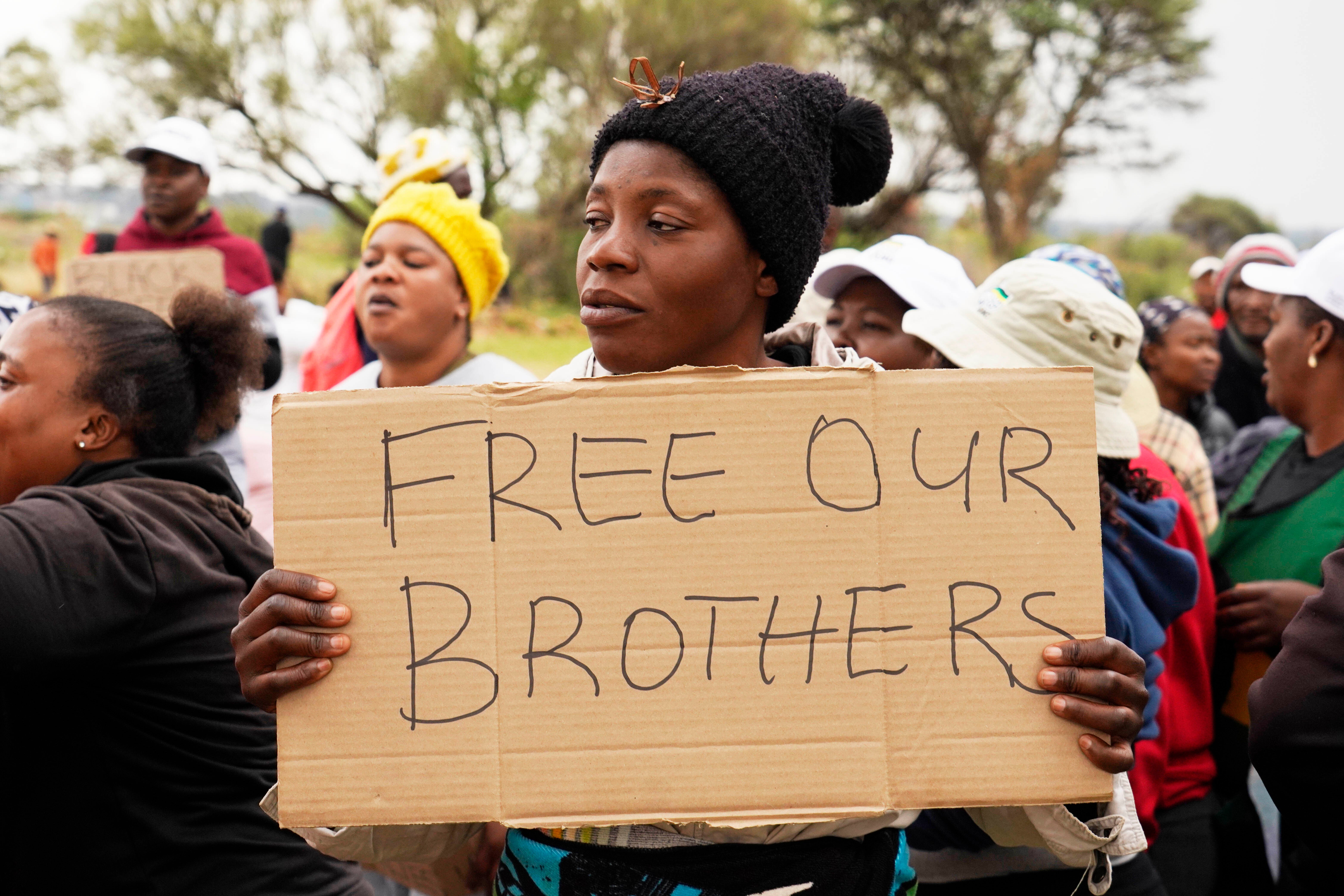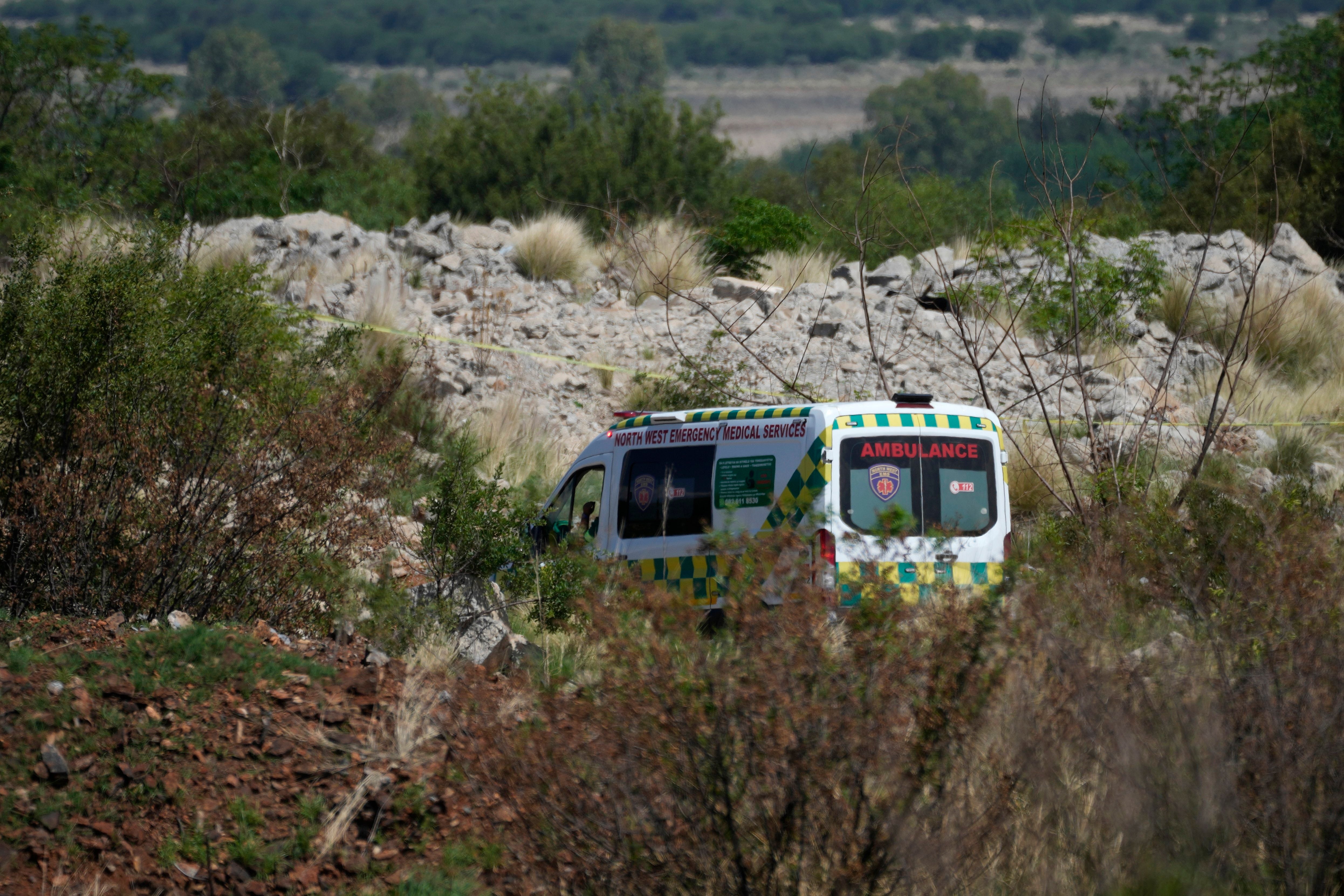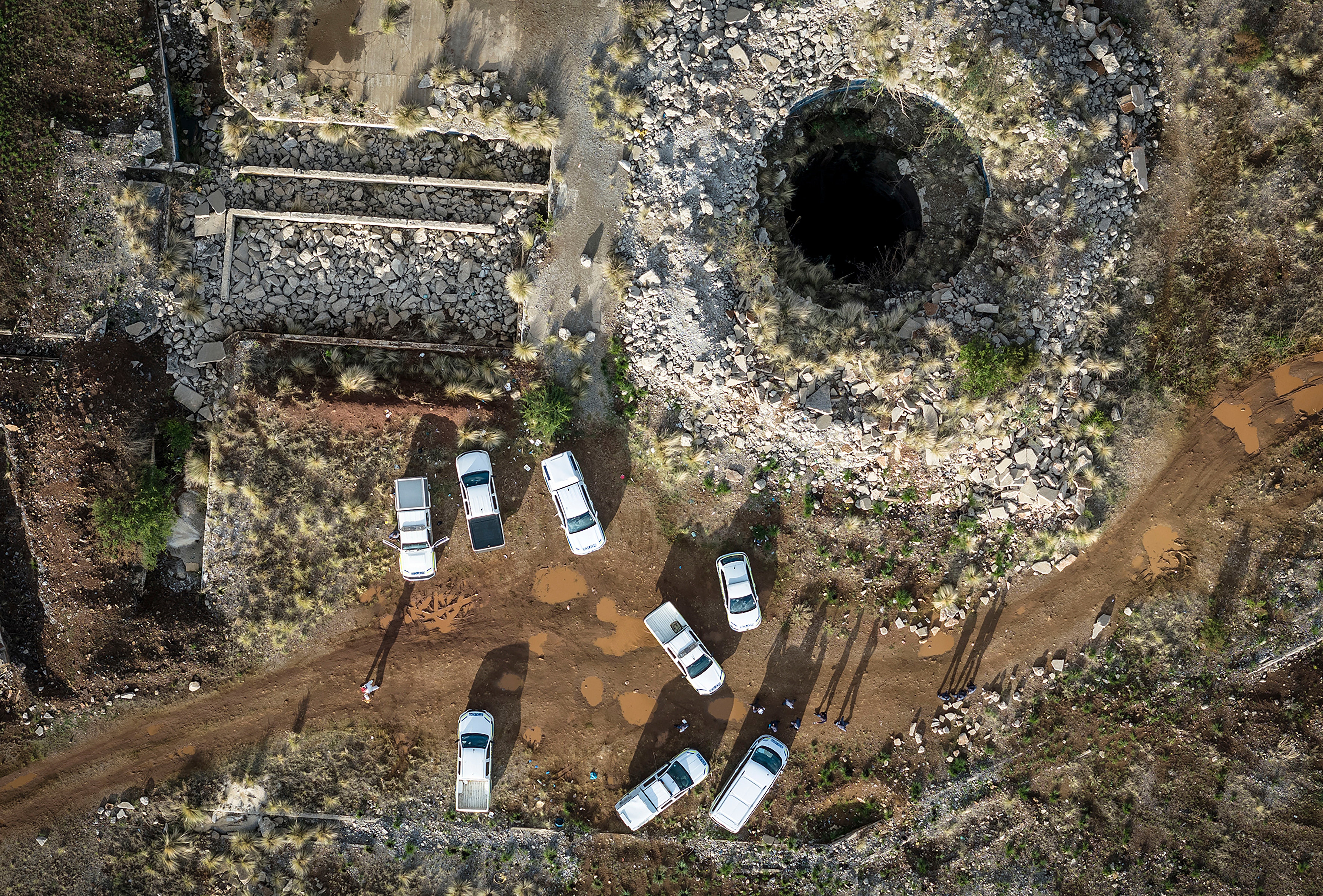Operation ‘Close the Hole’: What to know about a standoff between police and trapped miners in South Africa
The illegal miners are known as zama-zamas or ‘hustlers’ in the Zulu language

Your support helps us to tell the story
From reproductive rights to climate change to Big Tech, The Independent is on the ground when the story is developing. Whether it's investigating the financials of Elon Musk's pro-Trump PAC or producing our latest documentary, 'The A Word', which shines a light on the American women fighting for reproductive rights, we know how important it is to parse out the facts from the messaging.
At such a critical moment in US history, we need reporters on the ground. Your donation allows us to keep sending journalists to speak to both sides of the story.
The Independent is trusted by Americans across the entire political spectrum. And unlike many other quality news outlets, we choose not to lock Americans out of our reporting and analysis with paywalls. We believe quality journalism should be available to everyone, paid for by those who can afford it.
Your support makes all the difference.South African authorities are embroiled in a standoff with an unconfirmed number of illegal miners who remain underground at an abandoned mine.
The miners, originally reported to be in the thousands, apparently fear arrest by police officers deployed at the site.
The miners in Stilfontein, in the country’s North West province, have been entering the mine, which is no longer in operation, searching for gold deposits. Such illegal mining has long been going on across South Africa.
The standoff in Stilfontein — now in its third week — has highlighted the extent of illegal mining in the country.
Police initially prevented basic supplies from getting to the miners but are now sending them packets of instant porridge and trying to get them to come up to the surface.

Illegal mining has been underway for decades, on the back of the country's once booming mining industry.
The illegal miners — known as zama-zamas or "hustlers” in the Zulu language — search for gold and other precious metal deposits at old and abandoned mines that have been closed or where mining has been halted.
Police consider the illegal miners dangerous because they are usually armed and are known to fight violent turf battles among themselves. The trade is believed to be dominated by migrants who enter the country illegally from neighboring Lesotho, Zimbabwe and Mozambique.
A map of Stilfontein:
Police have at times announced successes in arresting the illegal miners but they say they cannot combat the practice unless powerful kingpins who run lucrative syndicates from the trade are apprehended.
The government estimates that there are about 6,000 unused or abandoned mines in South Africa and that close to $1 billion is lost annually in revenue due to illegal mining.
Operation ‘Close the Hole’
Since last December, police, government agencies and the military have joined forces in an operation dubbed “Close the Hole” or “Vala Umgodi” in Zulu — basically trying to starve the illegal miners underground by denying them basic supplies.
Working in groups, zama-zamas typically remain in the mines for extended periods of time, relying on those on the surface to provide them with food, water, cigarettes and other items.
But since the operation began, police have arrested the on-the-ground accomplices and those trying to take supplies to the illegal miners. They have also closed entrances on the ground for taking supplies down. The tactic seems to be trying to force the miners to the surface as their supplies run out.

Police say that so far, 14,000 illegal miners have been arrested and that $277 000 in cash and $1.8 million worth of uncut diamonds have been seized.
Earlier this month, 565 illegal miners were arrested at an abandoned mine in Orkney, in the same North West province as Stilfontein, when they resurfaced after running out of supplies.
What has happened so far at Stilfontein?
Members of the Stilfontein local community first tried to bring the illegal miners out but then authorities took over.
The mine is 2,500 meters (8,000 feet) deep and getting the zama-zamas, many of them likely armed, out by force would be risky.
Three illegal miners have reportedly come out and last Thursday, a decomposed body believed to be of one of the miners was brought to the surface. Police said they are still trying to determine the person’s identity and cause of death.
Initial estimates, based on information from community members who tried to mediate, say there are about 4,500 illegal miners underground but police have since suggested the number is more likely between 350 and 400.
Provincial authorities this week said plans include sending a “cage” down the mine to lift the miners — a few at a time — to the surface, but the safety of such an operation would need to be assessed first.
The government team is also considering sending a camera down to have a visual idea of the situation underground.
A civil society group has gone to court to try and force authorities to allow that supplies be sent to the miners. The government argues they are not trapped but refusing to come out to avoid arrest.